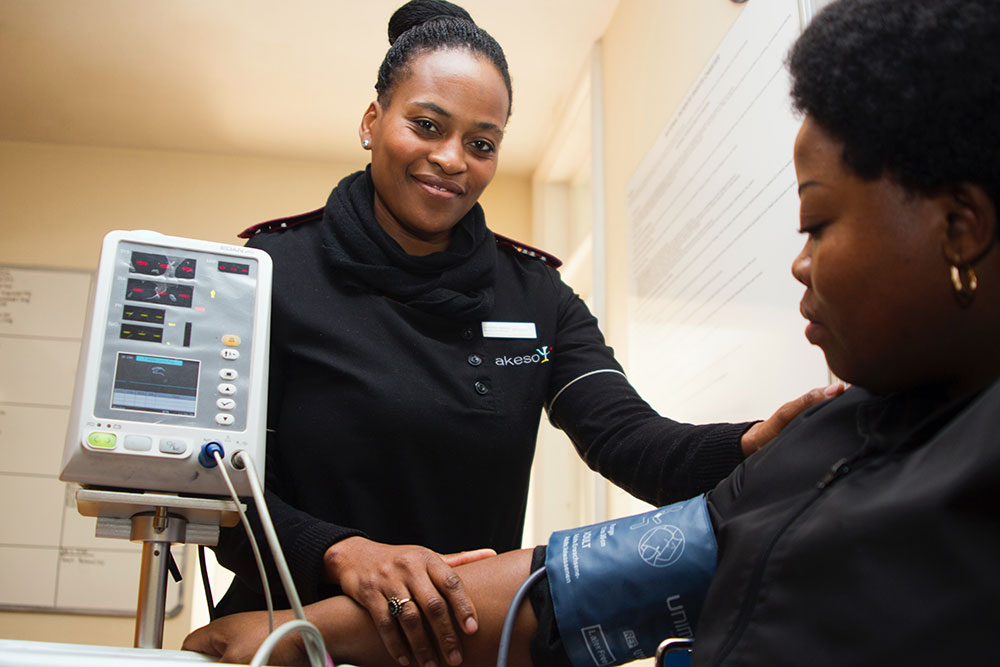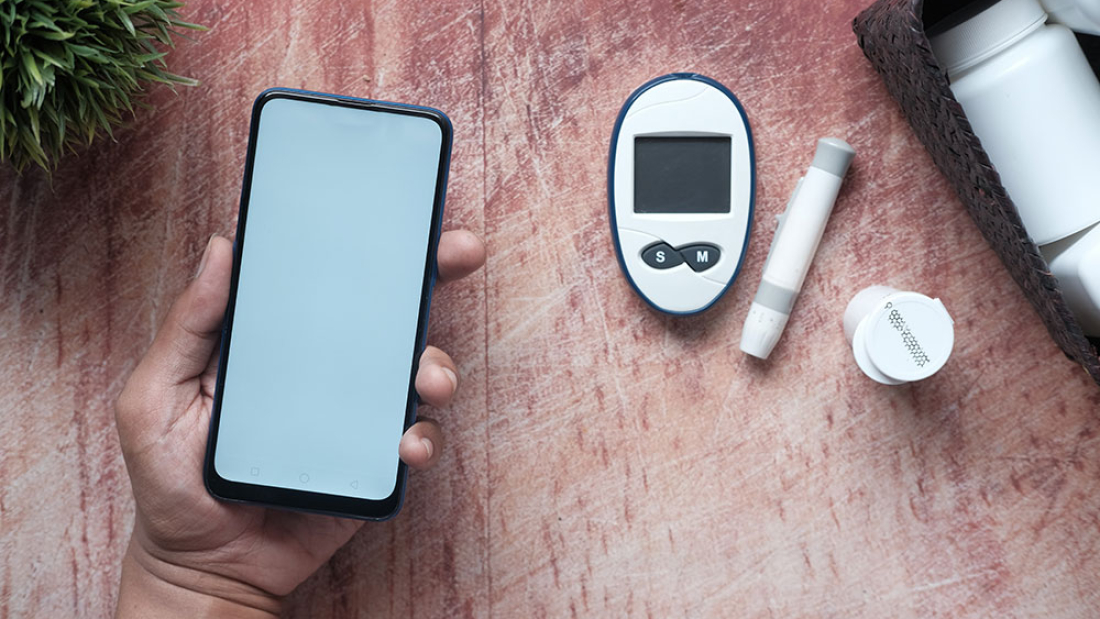Diabetes, a chronic metabolic disorder, has emerged as a global health concern affecting millions of people worldwide. Characterized by high blood sugar levels, diabetes disrupts the body’s ability to regulate insulin, a hormone responsible for managing glucose levels. This condition can have a profound impact on various aspects of an individual’s health, from cardiovascular function to kidney function and overall well-being.
Type 2 diabetes, the most prevalent form of diabetes, accounts for approximately 90% of all diabetes cases. Unlike type 1 diabetes, which is an autoimmune disease, type 2 diabetes is largely influenced by lifestyle factors, including poor dietary choices, sedentary lifestyles, and obesity. It typically develops when the body becomes resistant to insulin or fails to produce enough insulin to maintain normal blood sugar levels.
The onset of type 2 diabetes is often gradual, with symptoms that may go unnoticed in the early stages. However, as the condition progresses, individuals may experience symptoms such as frequent urination, excessive thirst, unexplained weight loss, fatigue, and blurred vision. If left untreated or poorly managed, type 2 diabetes can lead to severe complications, including heart disease, stroke, kidney problems, nerve damage, and even limb amputations.
Given its significant impact on public health, understanding the causes, risk factors, and management strategies for type 2 diabetes is crucial. Through proper education, lifestyle modifications, and medical interventions, individuals can take proactive steps to prevent, manage, and control this chronic condition, ultimately improving their quality of life and reducing the risk of long-term complications.
When Was Diabetes Discovered?
Diabetes has a long history, dating back thousands of years. The earliest known written record of a disease resembling diabetes was found on an Egyptian papyrus from around 1550 BCE. The document described the symptoms of a condition characterized by frequent urination and excessive thirst, which are classic signs of diabetes.
In ancient times, the term “diabetes” was used by Greek physician Aretaeus of Cappadocia in the 2nd century CE. He coined the term “diabetes,” derived from the Greek word meaning “to pass through” or “to siphon,” referring to the excessive urination associated with the condition.
The understanding of diabetes as a disorder affecting the metabolism and blood sugar regulation began to develop in the 18th and 19th centuries. In 1776, English physician Matthew Dobson first discovered that the urine of individuals with diabetes contained excess sugar. This finding laid the foundation for further research into the role of sugar metabolism in diabetes.
Significant advancements came in the 20th century when insulin was discovered as a treatment for diabetes. In 1921, Canadian physician Frederick Banting and his research team successfully isolated insulin, a hormone produced by the pancreas that regulates blood sugar levels. This breakthrough revolutionized the management of diabetes, particularly for individuals with type 1 diabetes, who rely on insulin injections for survival.
Since then, ongoing research and medical advancements have led to a better understanding of diabetes, its various types, risk factors, complications, and management strategies. Today, diabetes is a well-recognized and extensively studied condition, with ongoing efforts focused on improving prevention, diagnosis, and treatment options.
Where Is Diabetes Most Common in the World?
Diabetes is a global health concern that affects people in various parts of the world. However, the prevalence and distribution of diabetes can vary across different regions and countries.
As of my knowledge cutoff in September 2021, some regions with high prevalence rates of diabetes include:
- North America: Countries like the United States and Canada have witnessed a significant rise in diabetes cases, particularly type 2 diabetes, mainly due to sedentary lifestyles, unhealthy diets, and obesity.
- Western Pacific Region: Countries such as China, India, and Japan have seen an alarming increase in diabetes cases due to changing dietary patterns, urbanization, and lifestyle factors.
- Middle East and North Africa: Nations like Saudi Arabia, Kuwait, Qatar, and United Arab Emirates have reported high rates of diabetes, attributed to a combination of genetic predisposition, urbanization, and an increasing prevalence of obesity.
- Pacific Islands: Countries in the Pacific Islands, such as Nauru, Tonga, and Samoa, have experienced a high prevalence of diabetes, partly due to a shift from traditional diets to more processed and Westernized food choices.
- South and Southeast Asia: Countries like India, Bangladesh, and Indonesia are facing a growing burden of diabetes due to rapid urbanization, sedentary lifestyles, and dietary changes.
It’s important to note that the prevalence of diabetes is not limited to these regions, and the disease affects individuals worldwide. The exact distribution and prevalence rates may have changed since my knowledge cutoff, so it’s advisable to consult the latest data and research from reputable sources for the most up-to-date information.

What Causes Diabetes?
Diabetes is a complex condition with multiple factors contributing to its development. The two main types of diabetes, type 1 and type 2, have different underlying causes:
- Type 1 Diabetes: Type 1 diabetes is an autoimmune disease in which the immune system mistakenly attacks and destroys the insulin-producing cells in the pancreas. The exact cause of this immune response is not fully understood, but it is believed to involve a combination of genetic predisposition and environmental triggers, such as certain viral infections or exposure to certain dietary or environmental factors.
- Type 2 Diabetes: Type 2 diabetes typically develops due to a combination of insulin resistance and insufficient insulin production. Insulin resistance occurs when the body’s cells become less responsive to the effects of insulin, leading to elevated blood sugar levels. Several factors contribute to the development of type 2 diabetes, including:
- Obesity: Excess body weight, particularly around the waist, is a significant risk factor for type 2 diabetes. Obesity can lead to insulin resistance and impaired glucose metabolism.
- Sedentary Lifestyle: Lack of physical activity and a sedentary lifestyle can contribute to the development of insulin resistance and weight gain, increasing the risk of type 2 diabetes.
- Unhealthy Diet: Consuming a diet high in processed foods, sugary beverages, unhealthy fats, and low in fruits, vegetables, and whole grains can increase the risk of type 2 diabetes.
- Genetic Predisposition: Family history and genetics play a role in type 2 diabetes. Having a close family member with diabetes increases the risk of developing the condition.
- Age and Ethnicity: Advancing age and certain ethnic backgrounds, such as African, Hispanic, Asian, and Native American populations, have a higher risk of developing type 2 diabetes.
- Gestational Diabetes: Women who develop gestational diabetes during pregnancy are at an increased risk of developing type 2 diabetes later in life.
It’s important to note that while these factors contribute to the development of diabetes, they do not guarantee that an individual will develop the condition. Lifestyle modifications, such as maintaining a healthy weight, engaging in regular physical activity, and adopting a balanced diet, can help reduce the risk of developing type 2 diabetes and manage the condition effectively.
How Is Diabetes Diagnosed?
Diabetes is typically diagnosed through a combination of medical tests and evaluation of symptoms. The two primary tests used for diagnosing diabetes are the fasting plasma glucose (FPG) test and the oral glucose tolerance test (OGTT). Additionally, the glycated hemoglobin (HbA1c) test is sometimes used as a diagnostic tool. Here’s an overview of these diagnostic tests:
- Fasting Plasma Glucose (FPG) Test: This test measures blood glucose levels after an overnight fast. The individual is required to abstain from eating or drinking (except water) for at least 8 hours prior to the test. A blood sample is taken, and if the fasting plasma glucose level is equal to or greater than 126 milligrams per deciliter (mg/dL) (7.0 millimoles per liter [mmol/L]), it is indicative of diabetes.
- Oral Glucose Tolerance Test (OGTT): The OGTT measures blood glucose levels before and two hours after consuming a sugary drink containing a specific amount of glucose. After an overnight fast, the individual drinks the glucose solution, and blood samples are taken before and two hours after consumption. If the blood glucose level is equal to or exceeds 200 mg/dL (11.1 mmol/L) two hours after the drink, it suggests diabetes.
- Glycated Hemoglobin (HbA1c) Test: The HbA1c test measures the average blood glucose levels over the past two to three months. It provides an indication of long-term glucose control. If the HbA1c level is equal to or exceeds 6.5% (48 mmol/mol), it is typically considered diagnostic of diabetes.
It’s worth noting that a single positive result from any of these tests is not sufficient for diagnosis. In most cases, the diagnosis of diabetes requires repeated confirmatory testing on a separate day.
Additionally, if individuals exhibit classic symptoms of diabetes such as frequent urination, excessive thirst, unexplained weight loss, and fatigue, healthcare professionals may consider diagnosing diabetes based on these symptoms, even if the blood glucose levels do not meet the diagnostic criteria.
It’s crucial to consult a healthcare professional for an accurate diagnosis, as they will consider the test results, symptoms, and individual medical history to make an informed diagnosis and provide appropriate management strategies.
How Was Diabetes Diagnosed in the Past?
In the past, before the availability of advanced medical testing, the diagnosis of diabetes relied primarily on the observation of symptoms and clinical signs. Physicians would carefully examine patients and assess their symptoms to make a preliminary diagnosis. The following were some common methods used in the past for diagnosing diabetes:
- Observation of Symptoms: Doctors would pay close attention to the classic symptoms of diabetes, such as frequent urination (polyuria), excessive thirst (polydipsia), unexplained weight loss, and constant fatigue. These symptoms were considered red flags that could indicate the presence of diabetes.
- Sweet Urine Test: One of the earliest diagnostic methods involved tasting the patient’s urine for sweetness. Excessive sugar in the urine, a characteristic of diabetes, would make the urine taste sweet. This method, known as the “sweet urine test,” was used to detect the presence of glucose in the urine.
- Observation of Ants or Bees: Some historical accounts suggest that doctors would place a patient’s urine near an anthill or beehive and observe if the insects were attracted to it. The idea was that ants or bees would be drawn to the sweet urine of individuals with diabetes due to the high sugar content.
- Tasting Blood and Urine: In ancient times, physicians would sometimes taste a patient’s blood or urine to detect any unusual flavors or sweetness. This method, known as “tasting,” was a crude attempt to identify abnormalities in bodily fluids.
- Physical Examination: Physicians would assess patients for signs of weight loss, general weakness, and other physical manifestations associated with diabetes. They would also look for secondary complications such as skin infections, slow-healing wounds, or vision problems, which could be indications of uncontrolled diabetes.
It’s important to note that these diagnostic methods were not precise or scientifically validated, and they often relied on subjective observations. Over time, as medical understanding of diabetes improved and laboratory testing became more sophisticated, the diagnosis of diabetes shifted towards objective measures based on blood glucose levels and specific diagnostic tests, as mentioned in the previous response.

What Are the Different Types of Diabetes?
There are several types of diabetes, each with its own distinct characteristics and underlying causes. The main types of diabetes include:
- Type 1 Diabetes: Type 1 diabetes, also known as insulin-dependent diabetes or juvenile-onset diabetes, is an autoimmune disease. It occurs when the immune system mistakenly attacks and destroys the insulin-producing cells in the pancreas. As a result, the body cannot produce insulin, leading to elevated blood sugar levels. Type 1 diabetes typically develops in childhood or adolescence, but it can occur at any age. People with type 1 diabetes require lifelong insulin therapy for survival.
- Type 2 Diabetes: Type 2 diabetes, also called non-insulin-dependent diabetes or adult-onset diabetes, is the most common form of diabetes. It develops when the body becomes resistant to the effects of insulin or does not produce enough insulin to maintain normal blood sugar levels. Type 2 diabetes is often associated with lifestyle factors such as obesity, sedentary behavior, and unhealthy eating habits. It typically occurs in adulthood, but the increasing prevalence of obesity has led to its occurrence in younger individuals as well.
- Gestational Diabetes: Gestational diabetes occurs during pregnancy and affects some women who did not have diabetes before becoming pregnant. Hormonal changes during pregnancy can cause insulin resistance, leading to high blood sugar levels. While gestational diabetes usually resolves after childbirth, women who have had gestational diabetes are at an increased risk of developing type 2 diabetes later in life. Additionally, the condition poses risks to both the mother and the baby during pregnancy and delivery.
- Prediabetes: Prediabetes is a condition in which blood sugar levels are higher than normal but not yet in the range of diabetes. It is a warning sign that individuals are at risk of developing type 2 diabetes in the future. However, with appropriate lifestyle changes, such as weight loss, healthy eating, and regular physical activity, it is possible to prevent or delay the progression to type 2 diabetes.
- Other Specific Types: There are also specific types of diabetes that have distinct causes and characteristics. These include genetic forms of diabetes, such as maturity-onset diabetes of the young (MODY) and neonatal diabetes, as well as diabetes caused by certain medical conditions, such as pancreatic disease or hormone imbalances.
It’s important to note that while the above are the main types of diabetes, the classification and understanding of diabetes continue to evolve as researchers uncover new subtypes and variants of the disease.
Which Diabetes Is Worse?
Comparing the severity of different types of diabetes is not straightforward because each type has its own unique characteristics and potential complications. It’s important to understand that the impact of diabetes can vary from person to person, depending on various factors such as individual health, management strategies, and access to healthcare.
However, it can be said that poorly controlled diabetes, regardless of type, can lead to serious complications and have a significant impact on a person’s quality of life. Complications of diabetes include cardiovascular disease, kidney damage, nerve damage (neuropathy), eye problems (retinopathy), and increased susceptibility to infections.
Type 1 diabetes requires lifelong insulin therapy and close monitoring of blood sugar levels. If left unmanaged or poorly controlled, type 1 diabetes can lead to acute complications such as diabetic ketoacidosis (DKA), a life-threatening condition characterized by extremely high blood sugar levels and ketone build-up in the blood.
Type 2 diabetes, being the most common form, is often associated with lifestyle factors such as obesity and unhealthy eating habits. However, type 2 diabetes can also be managed effectively through lifestyle changes, oral medications, and sometimes insulin therapy. With proper management, many individuals with type 2 diabetes can achieve good control of their blood sugar levels and reduce the risk of complications.
It’s important to note that all types of diabetes require regular monitoring, adherence to treatment plans, and a comprehensive approach to managing the condition. Working closely with healthcare professionals, adopting a healthy lifestyle, and following prescribed treatments can significantly improve outcomes for individuals with diabetes, regardless of the type.
Overall…
Acknowledging the Struggles: Exploring the Complexities of Living with Diabetes. Our brief overview delves into the historical context of diabetes, offering valuable insights. We highly recommend conducting additional research and seeking guidance from your healthcare provider for any specific questions you may have.
Brought to you by Fomat Medical

